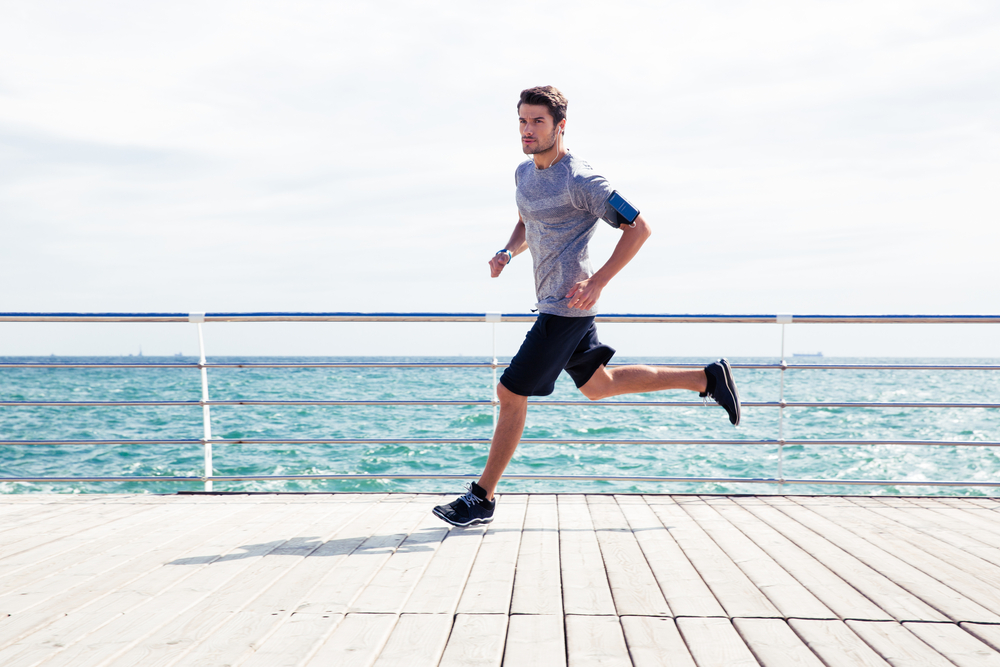Strength & Mobility for Golfers
Golf is often seen as a game of precision and strategy—but it’s also a sport that demands physical resilience. While developing technical skill and logging practice hours are essential, strength and mobility form the foundation for consistent, pain-free performance on the course.
Each swing involves complex coordination between your spine, hips, shoulders, and core. Without the right physical preparation, that repetitive motion can lead to strain, compensation, and eventual injury. Common issues like lower back pain, elbow irritation, and limited shoulder rotation often stem not from poor technique, but from physical limitations.
READ:Resilient Runner's Program: Sacramento PT’s Complete Guide to Injury-Free Running
Investing in fitness specifically tailored to golf helps you swing more efficiently, move more powerfully, and recover more quickly. At Lakas PT in Sacramento, golf fitness training is designed to support not just your game, but your long-term joint health and overall performance.
How Strength Training Improves Your Golf Swing and Endurance
A strong body supports a powerful and repeatable golf swing. While technique matters, your ability to generate speed and control through your swing comes largely from muscular strength—particularly in the core, glutes, and upper back.
Strength training enhances:
- Swing power: A stronger posterior chain allows for greater force generation through the hips and torso, translating into more clubhead speed and distance.
- Stability and control: Building strength in the legs and core improves your ability to stay balanced during your swing, especially on uneven terrain or in windy conditions.
- Endurance: Golf rounds can last several hours. Strength conditioning improves muscular endurance so you can maintain performance across 18 holes without fatigue setting in.
- Injury resistance: A stronger body is more resilient. Strength training helps reduce stress on joints and soft tissues by evenly distributing load and minimizing overuse.
At Lakas PT in Sacramento, strength work for golfers is functional and intentional—built around how your body moves on the course, not just how much weight you can lift.
The Role of Mobility in Preventing Injury and Enhancing Range of Motion
Mobility—the ability of your joints to move freely and efficiently—is just as important as strength when it comes to golf performance. A smooth, pain-free swing relies on adequate mobility in the hips, thoracic spine, and shoulders. Without it, compensations often occur, which can lead to inefficient mechanics and injury over time.
READ: Sacramento Runner's Guide to Physical Therapy: From Analysis to Marathon Success
Good mobility supports:
- A full backswing and follow-through: Limited range in the shoulders or spine can restrict your swing, reducing power and fluidity.
- Lower back protection: When your hips and mid-back move well, your lower back doesn’t have to work overtime—a key factor in preventing golf-related back pain.
- Consistent swing mechanics: Mobility allows you to repeat your movement patterns with greater control and fewer compensations.
- Reduced risk of overuse injuries: Joints and muscles that move efficiently are less likely to develop strain, inflammation, or irritation over time.
At Lakas PT, mobility work is targeted, progressive, and designed to unlock better movement specific to the demands of golf. It’s not just about stretching—it’s about moving better where it matters most.
Key Areas Golfers Should Target for Strength and Flexibility
To move efficiently on the course and avoid injury, golfers should focus on both building strength and improving mobility in key areas that drive the golf swing.
Core and Trunk
The core stabilizes your spine and transfers energy from your lower to upper body. Rotational strength and control are essential for a powerful and accurate swing.
Hips and Glutes
Strong and mobile hips are critical for generating torque and maintaining balance. Limited hip mobility often leads to compensation in the lower back or knees.
Thoracic Spine
Your upper back needs to rotate smoothly during the backswing and follow-through. Enhancing mobility here protects the shoulders and improves swing consistency.
Shoulders and Scapular Muscles
Stable, mobile shoulders allow for a full range of motion during the swing while protecting against overuse injuries like impingement or tendinitis.
Wrists and Forearms
These smaller muscles control the clubface and impact. Strength and endurance in the wrists and forearms improve shot precision and reduce fatigue late in a round.
At Lakas PT in Sacramento, these areas are addressed through personalized programming that aligns with your swing mechanics and overall fitness goals—helping you play stronger, longer, and pain-free.
READ: Physical Therapy Can Help Athletes Get Back in the Game in Sacramento
When to Work with a Movement Specialist at Lakas PT in Sacramento
If you’re a golfer dealing with stiffness, fatigue, or recurring aches that affect your swing—or you simply want to improve performance—a movement assessment with a specialist can provide clarity and direction. Many physical limitations go unnoticed until they start to impact consistency or cause pain.
You don’t need to be injured to benefit from expert support. In fact, working with a specialist proactively can:
- Identify mobility restrictions and movement inefficiencies
- Address imbalances before they lead to injury
- Customize strength and flexibility training for your swing
- Improve endurance and recovery after long rounds
- Support long-term joint health and physical longevity
At Lakas PT in Sacramento, golf fitness programs are built on evidence-based movement principles and real-world golf demands. Whether you’re a casual player or a competitive golfer, personalized support helps you move better and enjoy the game without limitations.


